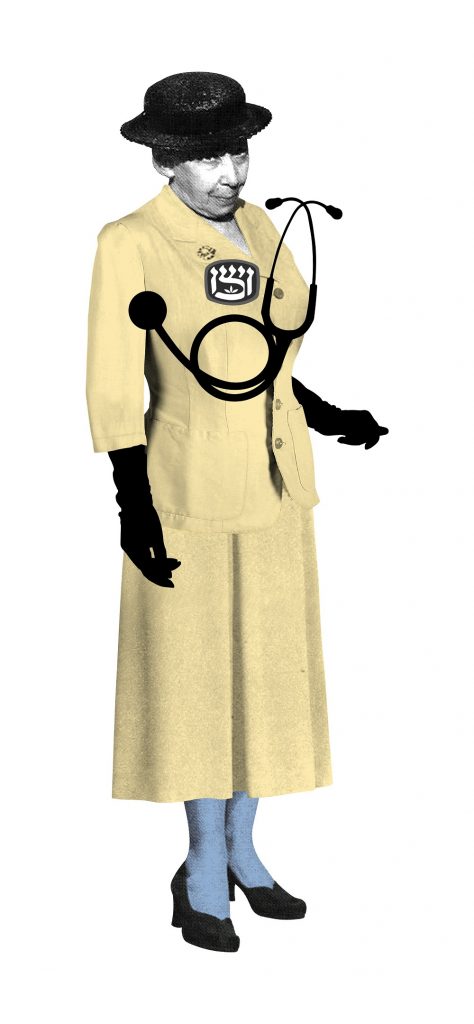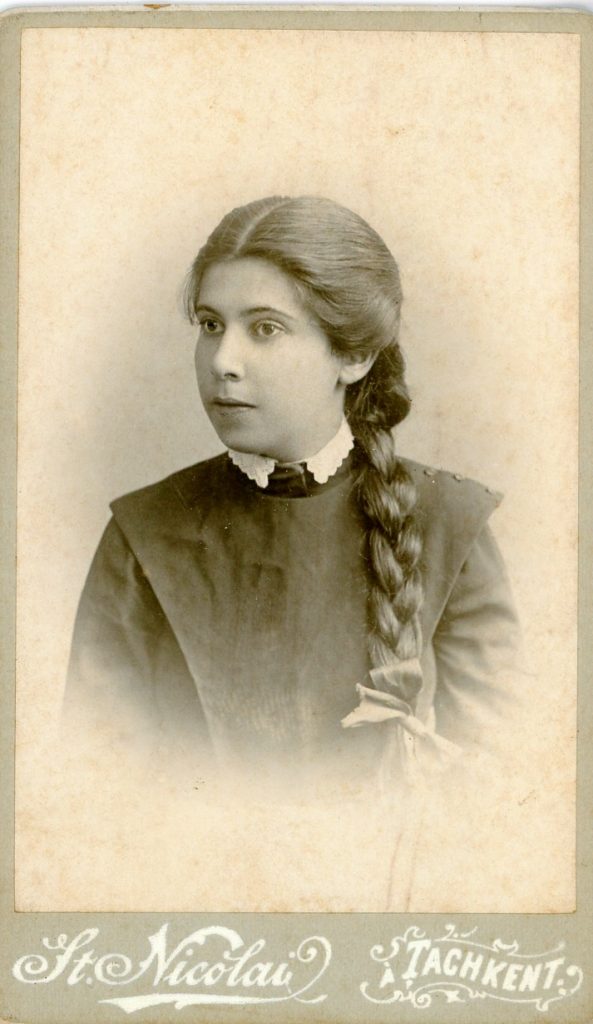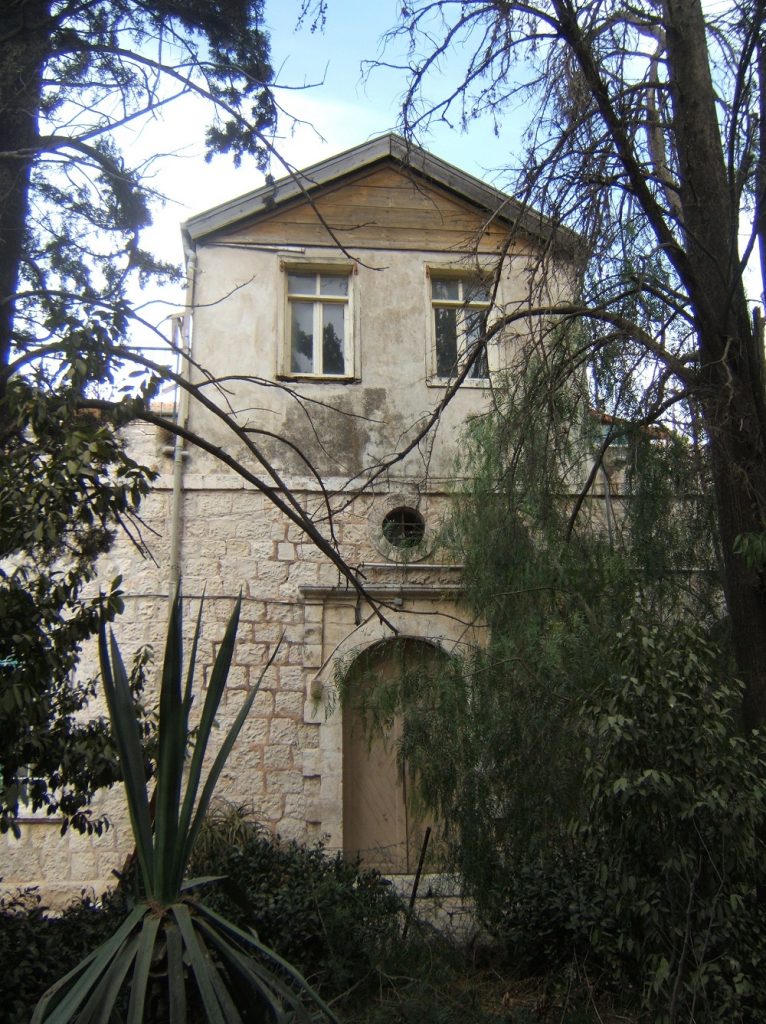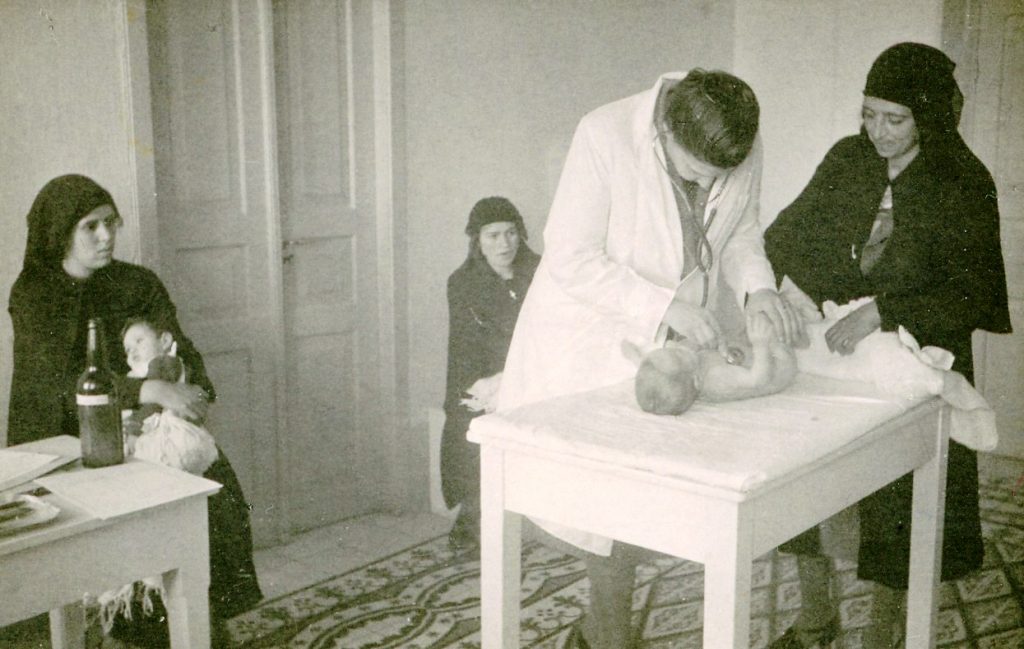Starting from the end of the Ottoman period, continuing through the entire British Mandate, and in the first decades following the establishment of the State of Israel, there was an extraordinary woman who worked in Jerusalem. Her name was Dr. Helena Kagan, and she was the first pediatrician in pre-State Palestine. Kagan laid the foundations of pediatric medicine and socialized medicine in the country, making her a legendary figure. In the 1960’s, the Hebrew daily Maariv described her as “the woman who treated all of Jerusalem’s children – Jews and non-Jews alike, children who lived in the aristocratic neighborhood of Rehavia, and poor children who lived in the foul-smelling alleyways in the city, and even the children of the Mufti.”
An image of Kagan, in the form of an illustration made by the artist, Yael Bogen, was recently added to the Women Trailblazers display in the Mosaic Gallery at ANU-Museum of the Jewish People.

Helena Kagan was born in Tashkent in 1889. Her father, a chemical engineer, had been sent to Uzbekistan, at the time part of the Russian Empire, to set up glass-manufacturing plants there. When she was 16, Kagan moved to Bern, Switzerland, where she studied music at the local conservatory. But she dropped out in order to study medicine – initially as a student who just audited classes because of her young age. Two years later, she was accepted as a regular student. Kagan specialized in pediatric medicine, finished her studies with high honors, and received an offer to join a research team. But she chose not to accept it and preferred to fulfill her late father’s Zionist dream.
Kagan and her mother immigrated to pre-State Palestine in 1914. However, her plan to work as a physician in the country was not easy to implement. The Ottoman authorities had never heard of women doctors, nor of pediatricians. They were unable to comprehend why children required healthcare that was different than that of adults. And in any case, they refused to issue her a license to practice medicine because she was a woman. Following the advice of the Turkish director of the public health services, Kagan opened a clinic in her home and began working without a license.
With the outbreak of World War I, Kagan and her mother were at risk of being deported. The doctor of the Jerusalem Municipality, Dr. Kamal Bey al-Husseini, who was related to the Mufti, helped them remain in the country. During the war, Kagan worked as a nurse at the municipal hospital in Jerusalem, where she trained both Jewish and Arab nurses. After most of the male doctors were drafted into the army, and owing to the outstanding work Kagan did at the hospital, the Ottoman authorities were left with no choice but to allow her to practice medicine, making her the first female physician to receive a license from them.

Kagan worked fervently to establish and develop pediatric medicine in the country, as well as welfare services for mothers and children. According to an article written by Dr. Zipora Shehory-Rubin, entitled “Dr. Bat Sheva Younis-Gutman – The Prototype of a Zionist Female Physician in Pre-State Israel During the Ottoman Period,” Kagan belonged to a wave of female physicians who specialized in a variety of fields…They were young doctors in their late twenties, or even in their mid-thirties, graduates of medical schools in Europe. They were highly educated, independent, very motivated, and strong believers in the future of medicine in the country. They worked tirelessly, with dedication and determination, and invested their best energies and knowledge in advancing the country’s healthcare system. What they envisioned was the emergence of a new generation, sound in both body and mind. These women doctors had immigrated to pre-State Israel out of a sense of mission, and viewed medicine as a Zionist-national calling, and not just a source of income.”
The list is too long to mention all the institutions that Helena Kagan founded and ran in Jerusalem: she opened the first children’s hospital in the city; she established WIZO’s childcare division, which she headed for many years; she founded the first daycare center for children of working mothers; she opened an orphanage; she worked at a nursery for Arab children in the Old City; she founded and managed the pediatric ward at Bikur Cholim Hospital; she opened a youth center, and much more. Kagan also researched rheumatic fever and asthma and won numerous prizes.
In 1958, Kagan received Jerusalem’s Distinguished Citizen award. She was later awarded an American decoration for “her service and contribution to research in the field of rheumatic fever.” However, in an interview she gave afterwards, she confessed that she did not like all “this hullabaloo.” Nevertheless, she was in the limelight once again in 1975 when she won the Israel Prize.
The old, two-story house on 64 HaNevi’im Street is one of the landmarks on that street. Kagan’s home was also known as The Holman Hunt House, named after the British painter, William Holman Hunt, who built it in 1876. Kagan moved into the house with her mother in 1919 and opened a clinic there. The story goes that the poetess, Rachel, rented a cabin in the yard of Kagan’s house, where she lived for a year and wrote her poem “Pear Tree” – inspired by the tree that grew in the garden.

Kagan lived in that house for the rest of her life, and treated children in her modest clinic until a very ripe age. Reference is made to her in various books, including Ethiopian Alley by Jacob’ Orland, and My Mea Shearim by Yehudit Toporovsky. In an article he wrote, Rafi Kfir (the owner of Love Jerusalem), quotes a passage from Esther Avissar’s book, A Home in Jerusalem. Avissar describes Kagan as being “heavy set, with a stern face and dark skin…Her devotion to sick children knew no boundaries, and it was said that she refused to accept a penny from the needy. Even the extreme religious Jews admired her and trusted only her, although she did not look like an observant woman and did not greet the parents with verses taken from the Bible…There was no one in Jerusalem who had not heard about the amazing female physician, and there was no sick child who was not brought to her when there was fear of a serious illness. When a child died in the neighborhood despite her devoted care, they said ‘it was from God’ and continued to have faith in her.”
During those periods when diseases and hunger led to high death rates among children, Kagan was considered an angel and a savior. According to Y. Amir, a columnist who worked for Maariv, “the elders of Jerusalem still remember how Kagan, dressed in a white coat, would run from alleyway to alleyway, from house to house, in the rain, in stormy weather, or under gun fire, in order to treat a sick child.” It was a well-known fact that Kagan treated Jewish, Muslim and Christian children, and made house calls throughout Jerusalem. In 1968, the British newspaper, The Observer Review, wrote that “a conversation with her makes people believe that, one day, conciliation will be achieved between Jews and Arabs.”

Much less has been written about her personal life. She was 47 years old when she married the Hungarian violinist, Emil Hauser, who had immigrated to the country shortly before that. Hauser brought music back into Kagan’s life, and their home on HaNevi’im Street became a gathering place for cultural highbrows. They were considered a power couple in Jerusalem’s intellectual circles. They held chamber concerts in their home, and hosted the academic elite and the leaders of pre-State Israel.
Hauser took advantage of his wife’s widespread connections, and with her assistance founded the Jerusalem Conservatory of Music in 1933. After the Nazis rose to power, the couple tried to bring young Jewish musical talents to the country from Europe. Kagan and Hauser separated a few years later, after which he moved to the United States. He remained there for about twenty years and returned to Israel only after he was diagnosed with Parkinson’s disease. They never had any children.
“The first women physicians represented something totally different than what was expected of a Jewish girl – namely, to fill the traditional role of facilitating their husbands, raising the children, and avoiding getting involved in matters outside the household.” In an article she published, that is how Shehory-Rubin accurately described Kagan’s life and that of the other trailblazing female doctors. “The marital status of most of the female doctors was highly unusual for the period they lived in. For the most part, they were single, independent, and professionals. They came to the country on their own in their late twenties or mid-thirties, acclimated to the local way of life, and paved their careers paths without having their parents present or having families of their own. Medicine was their whole world. Those who married, did so at a relatively late age – many times to widowers and fathers of children who were also professionals and public figures who contributed to the society around them. Some of the women got divorced after a few years of marriage…they were childless and died alone. The fact that they married at a late age can be attributed to their dedication to their work or because they viewed it as a calling. As Rachel Elboim-Dror wrote: ‘only a single woman who is not found within the female sexual materiality can achieve her professional calling.’ Most of the female physicians died when they were in their 80’s, or even older. The one who lived the longest was Dr. Helena Kagan, who died at the age of 89, rich in days and deeds”.